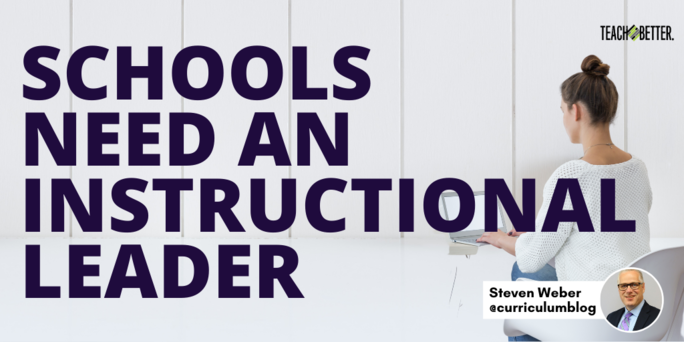TL;DR:
- While building school culture is important, principals also need to be instructional leaders who analyze data and have a clear vision, goals for learning, and a commitment to these goals.
- There are 7 questions to ask that will guide your practice as an instructional leader.
“A school without clearly defined goals can be likened to a ship without a rudder; it lacks direction and is easily blown off course.”
– Jon Wiles
Instructional Leaders
When the building principal is an instructional leader, teachers receive the support they need in order to prepare students for the next level. Successful principals understand that it is important to establish clear learning goals and garner schoolwide—and even community-wide—commitment to these goals. The development of a clear vision and goals for learning is emphasized by principals of high-achieving schools (Leithwood & Riehl, 2003).
Importance of Being an Instructional Leader
Based on current books and online articles about the role of the principal, it is easy to be misled. Contemporary authors describe the principal’s role as a clown at the rodeo, a dancer on Dancing with the Stars, or your best friend who never leads meetings or sits in an office. While building relationships is critically important for a K-12 principal, there is more to the job than leading weekly assemblies and taking selfies with students in the lunchroom. What seems to be missing from the current literature on the principalship is the importance of being an instructional leader.
Successful principals understand that it is important to establish clear learning goals and garner schoolwide—and even community-wide—commitment to these goals. Click To Tweet
Instructional Leaders Look at Data
Instructional leaders use data to determine if the written curriculum and instructional strategies are yielding the desired outcomes. Data-driven schools focus on key indicators that support teaching and learning. There are two types of schools: Schools where student growth is increasing and schools where student growth is declining. “Timely indicators are hugely important if institutional leaders are to know whether things are on track or off track – before it’s too late” (Offenstein, Moore, & Shulock, 2010, p. 1).
Thus, principals should monitor attendance, behavior, grades, formative assessment scores, summative assessment scores, and other indicators that are available. Data-driven schools focus on continuous improvement.
Effective principals may…
- Take a pie in the face.
- Sit in a dunk tank.
- Kiss a pig.
- Sit on the roof of the school.
- Have a Hawaiian luau-themed faculty meeting.
- Shave their head.
- Take selfies.
- Get slimed at a student assembly.
The intent of this article is not to say K-12 principals should avoid these things. Above all, school culture is critical. Naturally, when principals have fun, it creates a student-friendly and family-friendly culture. Having a customer-friendly school is part of the principal’s job. “Culture affects all aspects of a school. It influences informal conversations in the faculty lunchroom, the type of instruction valued, how professional development is viewed, and the shared commitment to assuring all students learn” (Deal & Petersen, 2009).
Focus on Culture and Instructional Leadership
Moreover, in recent articles and books about the principalship, the shift seems to focus more on school culture than instructional leadership. As a principal, make certain you wear both hats. Glatthorn (1987) wrote, “One of the tasks of curriculum leadership is to use the right methods to bring the written, the taught, the supported, and the tested curriculums into closer alignment, so that the learned curriculum is maximized” (p. 4).
As an instructional leader, “How are you maximizing student understanding?”
7 Questions For Instructional Leaders
- Do teachers know the expectations that you have for teaching and learning?
- Do grade-level teams/courses have SMART goals?
- Are formative assessments taking place before, during, and after instruction?
- Does each teacher understand the ‘Priority Standards’?
- Are teachers required to post the learning target or goal?
- Do we have a plan for when students don’t learn?
- Would I place my own son or daughter in this classroom?

In conclusion, if you are spending more time planning Spirit Week, Fun Fridays, student assemblies, your next costume, the next video, or the fall carnival than you are on the seven questions for instructional leaders, it may be time to revisit the instructional leadership hat. Students are depending on the instructional leader to provide them with the opportunity to be successful at the next level and beyond. Don’t ignore school culture, and avoid ignoring instructional leadership.
About Steven Weber
Dr. Steven Weber is the Associate Superintendent for Teaching and Learning with Fayetteville Public Schools (AR). His areas of research include curriculum design, formative assessment, professional learning, and school leadership.



